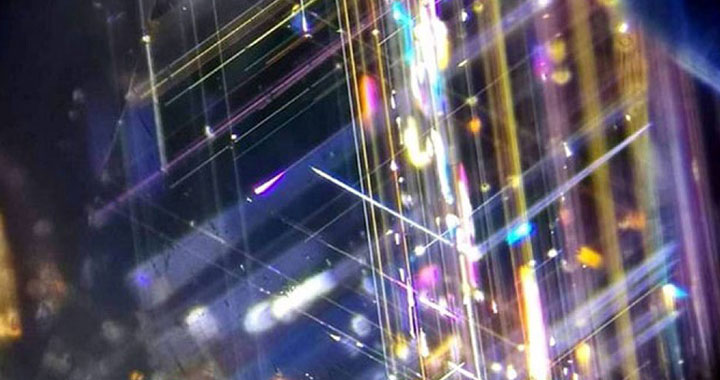As a valuer and gemmologist I work with gemstones daily. Testing, grading and valuing coloured gems is a personal highlight of my work and it was around 5 years ago when testing a Ceylon sapphire that I first fell in love with photomicrography.
I noticed that viewing the stone under the microscope allowed me to dive deeper into understanding the gem and its value. Since then, what was a routine part of gem testing has become a hobby of mine and I can spend hours viewing one gemstone, trying to capture the perfect photomicrograph. In 2021 I was awarded second place in the Gem-A photography competition for this image.

So what is photomicrography?
Put simply, photomicrography is the photography of objects (gemstones in this case) under a microscope.
To begin, I start by thoroughly cleaning the gemstone or item of jewellery I am working on. It’s important not to have any dirt, grease, or dirt on the stone prior to inspection. I will then spend some time viewing the stone in several positions and angles to allow me to find the perfect inclusion scene for my photography. It’s not uncommon for me to spend 30 minutes just getting the perfect lighting and angle for my image. Sometimes I take several photographs at very slightly different focal lengths and then stack the images together using computer software. This can create a sense of depth within the finished piece. This image is made from a stack of 20 photomicrographs.

What can photomicrography tell us about a gemstone?
Natural or Synthetic?
With a higher level of zoom than a jeweller’s loupe, the microscope allows us a more in-depth view of the gem. This can allow us to determine if a gemstone is natural or synthetic; in this image of a synthetic ruby for example where we can see curved striae indicative of Verneuil Flame Fusion growth. In the case of natural stones, we may find crystal inclusions, colour-zoning and/or fingerprints. The microscope can also be a useful step in identifying synthetic diamonds.

Treatments
We can also detect treatments such as coating, dyeing and fracture filling. This image shows a natural ruby which has been lead-glass filled to improve its apparent clarity. This is an important treatment to be able to identify before carrying out any repairs as the filler is unstable and can degrade severely under high heat, like that of a jeweller’s torch – or by cleaning in ultrasonic or steam cleaners. You will see from the image that the surface of the stone appears ‘crazed’ under magnification. At a higher level of magnification we may also encounter bubbles within the glass, another tell-tale sign of treatment.

Heat treatment is considered a standard treatment within the trade for most gemstones but for sapphires and rubies most importantly, evidence of no heat treatment can increase the stone’s value greatly if the stone is otherwise of nice quality. This image shows undissolved rutile ‘silk’ inclusions within a Sri Lankan sapphire. This is evidence of no, or very low heat treatment and allowed me to value the stone accordingly.

In the following image we see amber containing ‘sun spangles’, which are indicative of heat treatment.

Origin Determination
Another important use of photomicrography is determining the origin of a gemstone. In this image we can see a three-phase inclusion which contains a liquid within a cavity, a gas, and a solid which in this case is a calcite crystal. There are also some blocky two-phase inclusions visible. This emerald was determined to be of Zambian origin. Determining the origin of a gemstone allows us to value it more accurately as some localities carry a premium, such as Colombian Muzo emeralds and Burmese sapphires and rubies from the infamous Mogok.
Let’s look at a price comparison to show how origin affects a gem’s value. In the case of this emerald from Zambia, the retail price per carat was £4950. The equivalent stone of same quality but with a Colombian origin would have a retail price per carat of £5850, that’s more than an 18% price difference.

Conclusion
For me, photomicrography is an incredibly useful tool which allows me to accurately value gemstones. But its also become a passion and something I thoroughly enjoy doing. I am always trying to improve on my image quality and find new stones with interesting inclusions which people may not have seen before. If you’d like to see more of my photomicrography, you can check out my Instagram page: Instagram.com/Sammantha_maclachlan_fga_ltd
Rachel brings over 30 years of experience in the Art & Antiques industry and over the past fifteen years she has been responsible for looking after both clients and professional advisers with their valuation needs.







